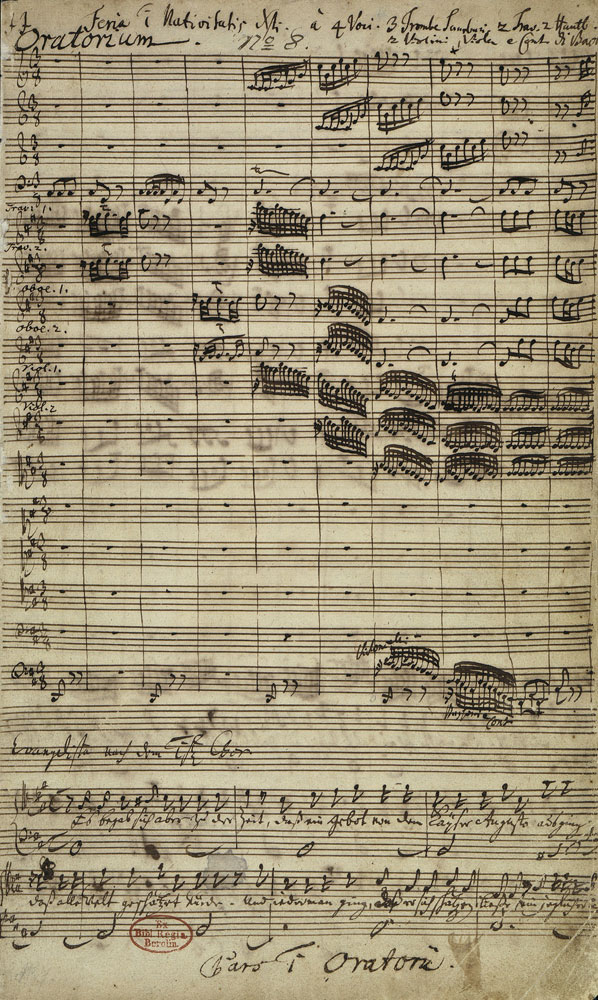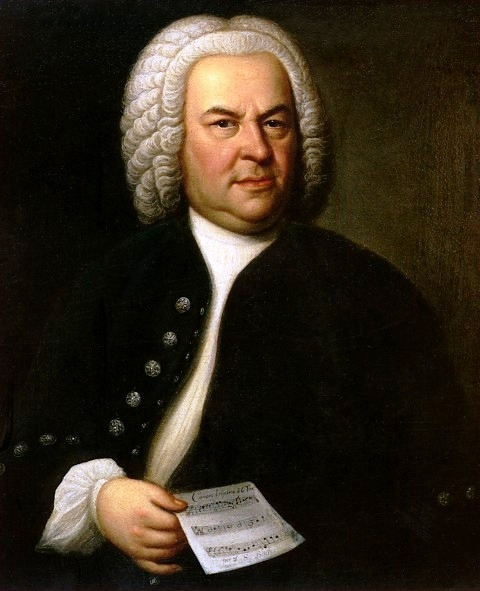
purpose of music composed for holy days is to remind us of the very meaning of those days. English speakers are blessed to have Handel’s “Messiah” as a magnificent reminder of Christmas. Though Handel wrote only a portion of his famous oratorio for Christmas (the “Hallelujah” chorus is meant for Good Friday, and much of the rest for Easter), it has come to represent the majesty of the season.
But a second work, in German, deserves attention as a reminder of Christmas’s span of twelve-plus-one days. “ Twelve Days of Christmas,” irritating song that it is, at least gets the number right: re really are a dozen days of Christmas, plus a 13th (about which more later) that links Christmastide to the “ordinary time” that follows. That work is J.S. Bach’s “Christmas Oratorio,” a cycle of six cantatas celebrating half a dozen different aspects of Christmastide.

Real 12 Days of Christmas
Contrary to commercial interests, there are no “Twelve Shopping Days of Christmas” leading up to Dec. 25. Actual Christmas begins on Dec. 25, or the eve thereof, and lasts through Jan. 5. On Jan. 6 comes that 13th day, called “Epiphany,” commemorating (in most traditions) the arrival of the three kings or Magi from the East. Bach’s six cantatas that make up the “Christmas Oratorio” honor the first, second, and third days of Christmas, plus a fourth for New Year’s Day, coinciding with the naming and circumcision of Jesus; a fifth for the journey of the Magi (first Sunday after the New Year); and finally, Epiphany itself for the adoration of the Magi.
Each reflects one characteristic of the Christmas season. first is regal and majestic, as befits the heralding of a royal birth. No. 2 is pastoral, painting a dual picture of the annunciation to the shepherds and the holy calm of Mary and her child. No. 3 is joyously buoyant as the shepherds arrive and the general recognition of the Christ child grows. In No. 4, the childlike hope of salvation in the name of Jesus gently is cradled in the glow of oboes and horns. With No. 5, the world enters the scene, as the Magi inquire after the whereabouts of the newborn King of the Jews, and Herod trembles at the thought. music is the most dramatic of the six. final cantata peals out in joy when the Magi find the Christ child and the victory over “devil and death” is realized. last words of the concluding movement are “Bei Gott hat seine Stelle/ Das menschliche Geschlecht.” (“With God is the place/ For the human race.”)
Sampling the Larger Work
Like “Messiah” (and all other oratorios, for that matter), the “Christmas Oratorio” consists of arias, recitatives, orchestral sinfonia, and choruses. Among the latter in the “Christmas Oratorio” are many superior examples of a form of which Bach was absolute master: the chorale. This is a precomposed hymn tune harmonized for maximum expressivity. In the chorale, what is familiar (the hymn) is exalted in a simple way.
If you have never heard the “Christmas Oratorio,” I suggest two excerpts to sample the depth of artistry in the two and a half hours of Bach’s monumental score: from No. 2, the 10th number, which is an extended, exquisite alto solo that evokes Mary holding the baby; and the fourth entry of No. 4, the sublime “Echo” aria, in which a soprano searches for answers from God about the meaning of the baby’s birth, and receives them from an echoing soprano. entire “Christmas Oratorio” is well represented on YouTube and elsewhere.

Bach’s Gifts to the World
“Christmas Oratorio” is sometimes dismissed by critics who point out that three of the cantatas are “parody” works, incorporating music from earlier cantatas. This is ingratitude on stilts. treasures that J.S. Bach left for us are immeasurable. This man, whose earthly span was 65 years, who had to work his entire life through as a teacher and church musician, who sired and supported 20 children (only 10 survived to maturity) by two wives, somehow managed to find the energy and time to give us a catalog of works indispensable to the keyboard artist (“ Well-Tempered Clavier,” “Goldberg Variations,” and so on), to Christian liturgy (“Mass in B Minor,” two settings of the Passion, and others), to the discipline of polyphony (“ Art of the Fugue”), and to the early traditions of orchestral music (the “Brandenburg Concertos”).
To these add the “Christmas Oratorio,” a work largely ignored by English speakers, but one which speaks directly to the heart through music that proclaims, rejoices, and sings in wonder at the message of Christmas, a holy feast that stretches well beyond Dec. 25.
Pezou : J.S. Bach’s ‘Christmas Oratorio’ Captures Many Aspects of the Holiday